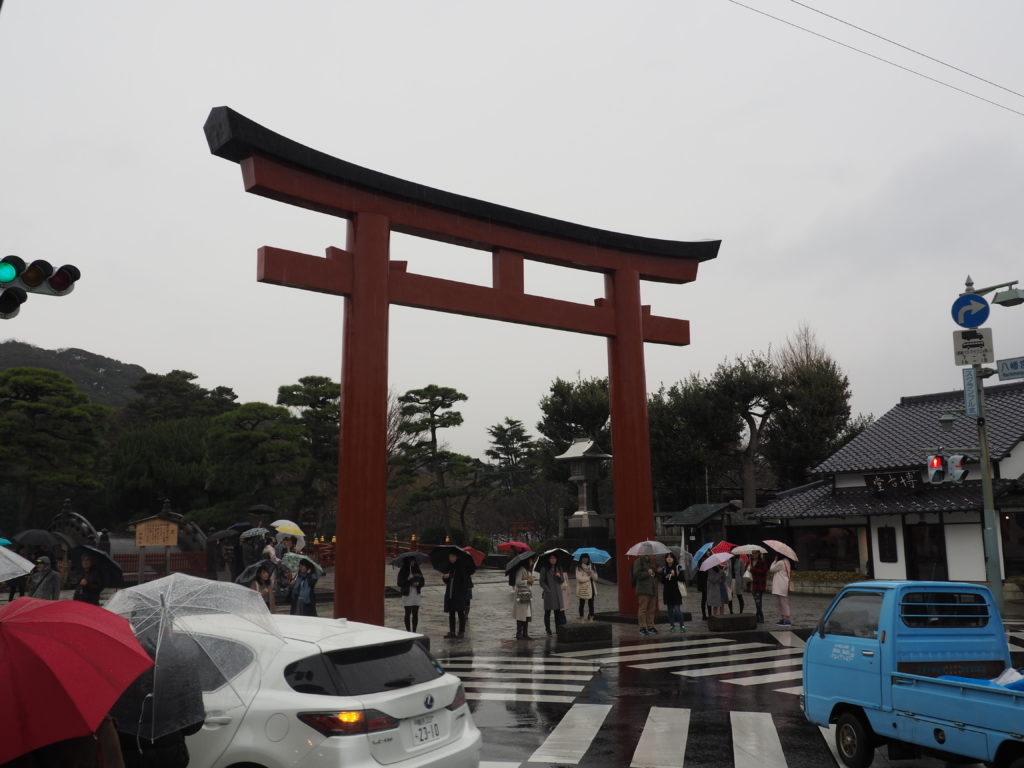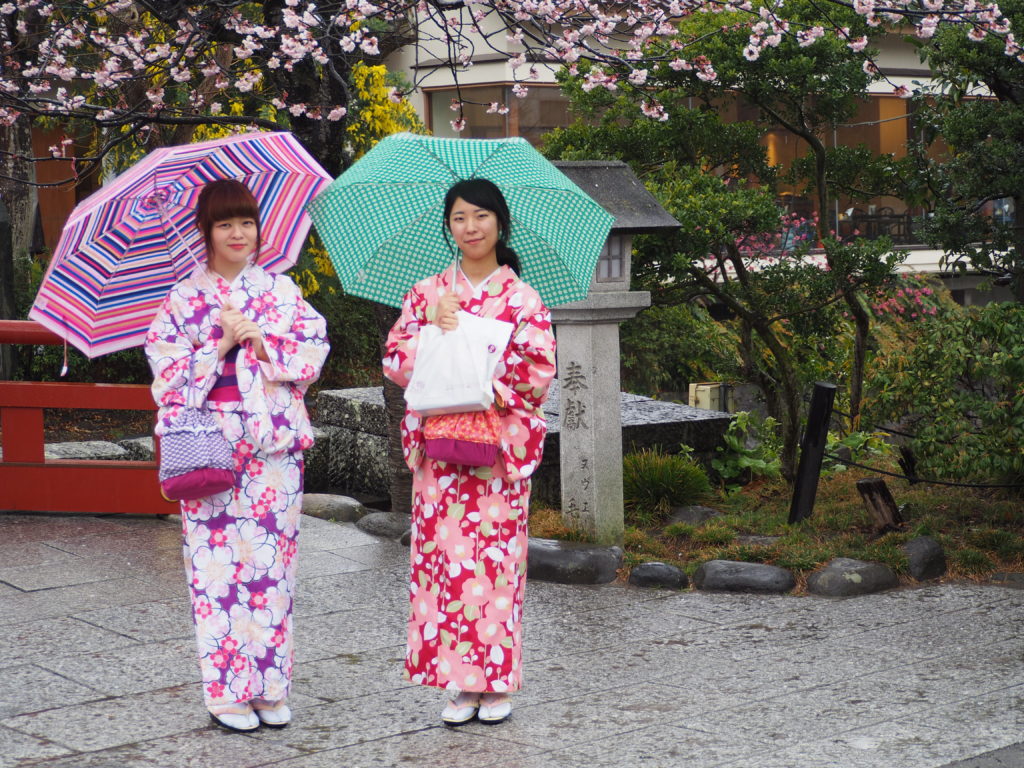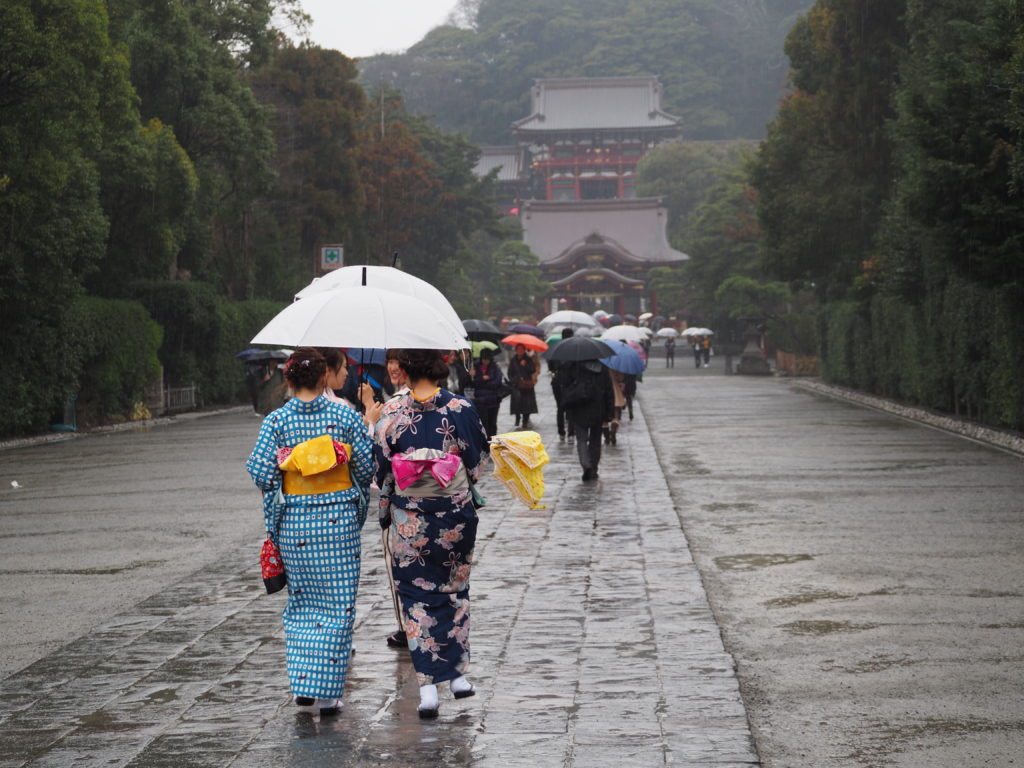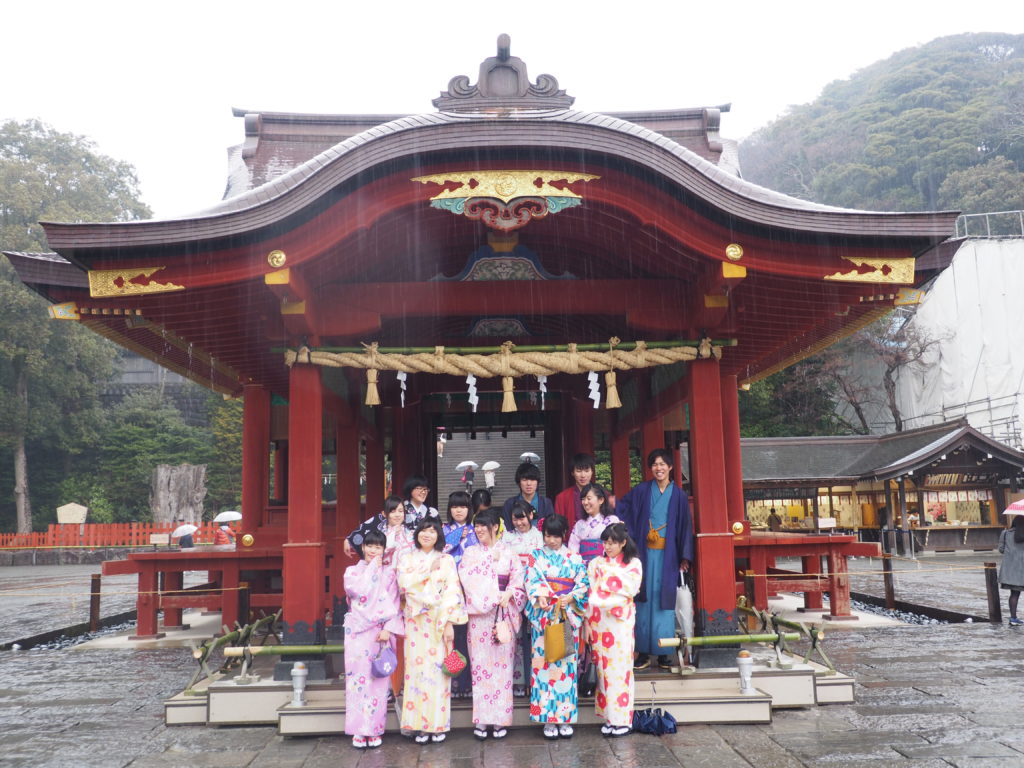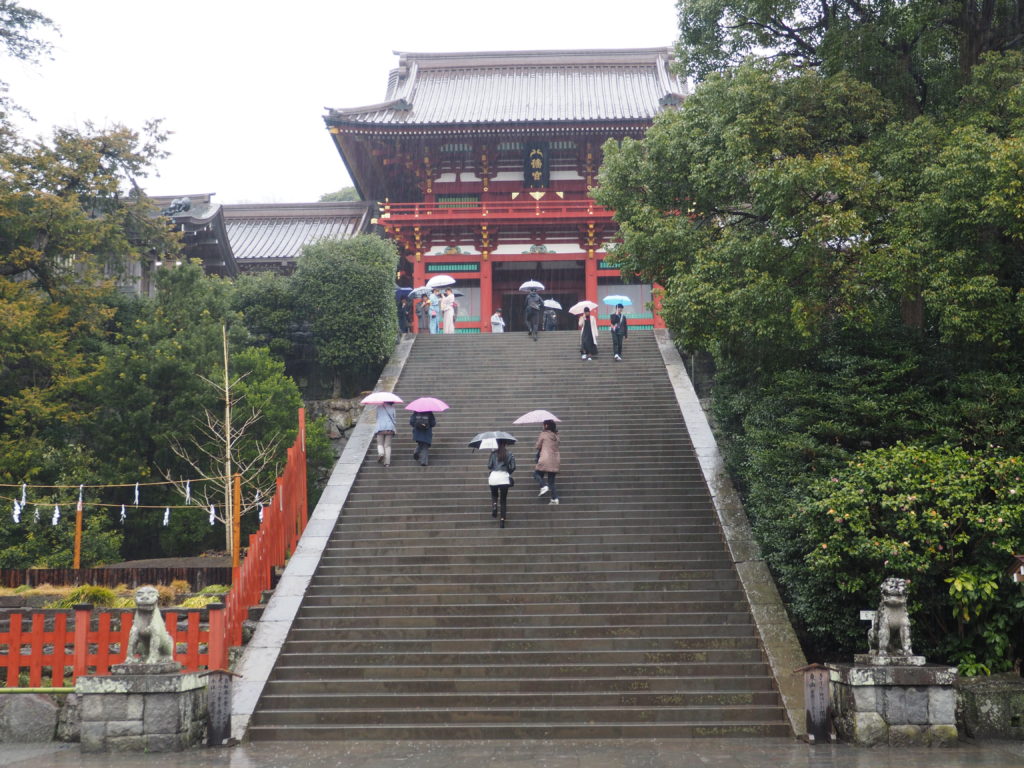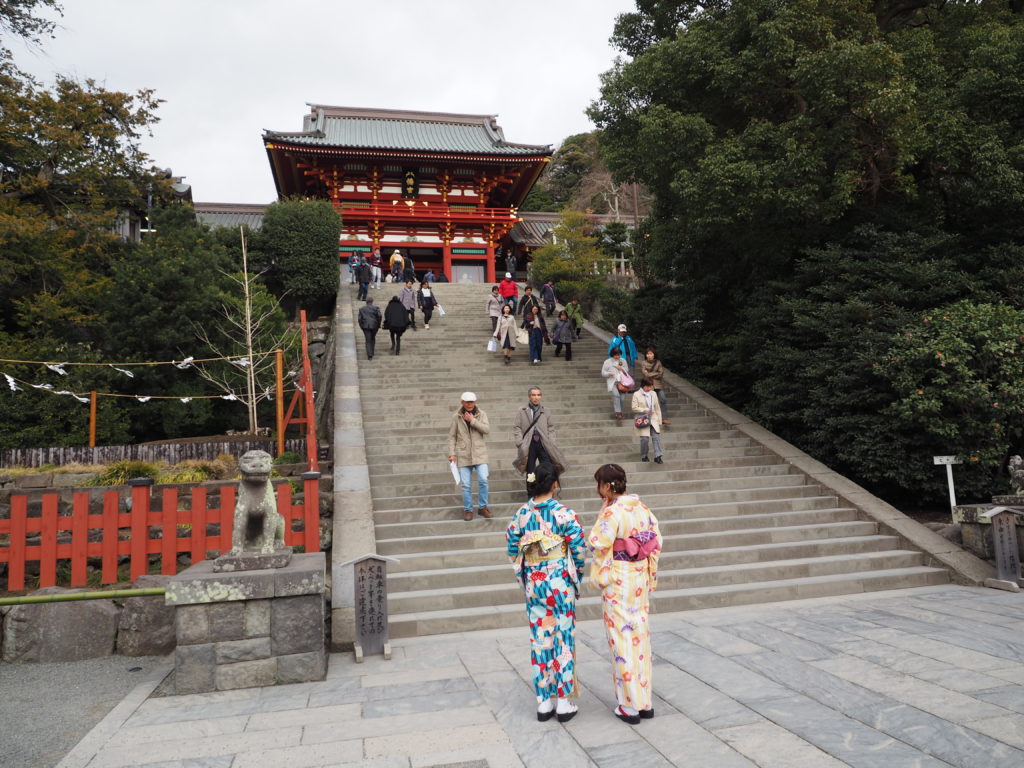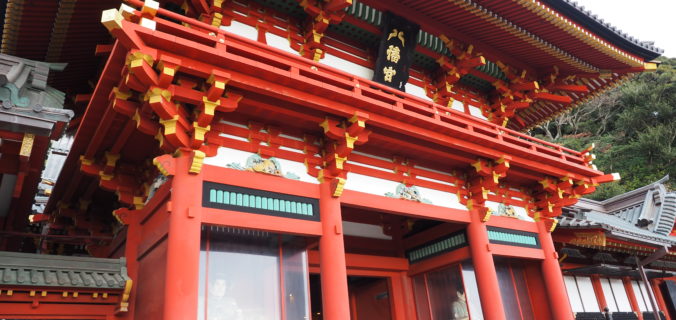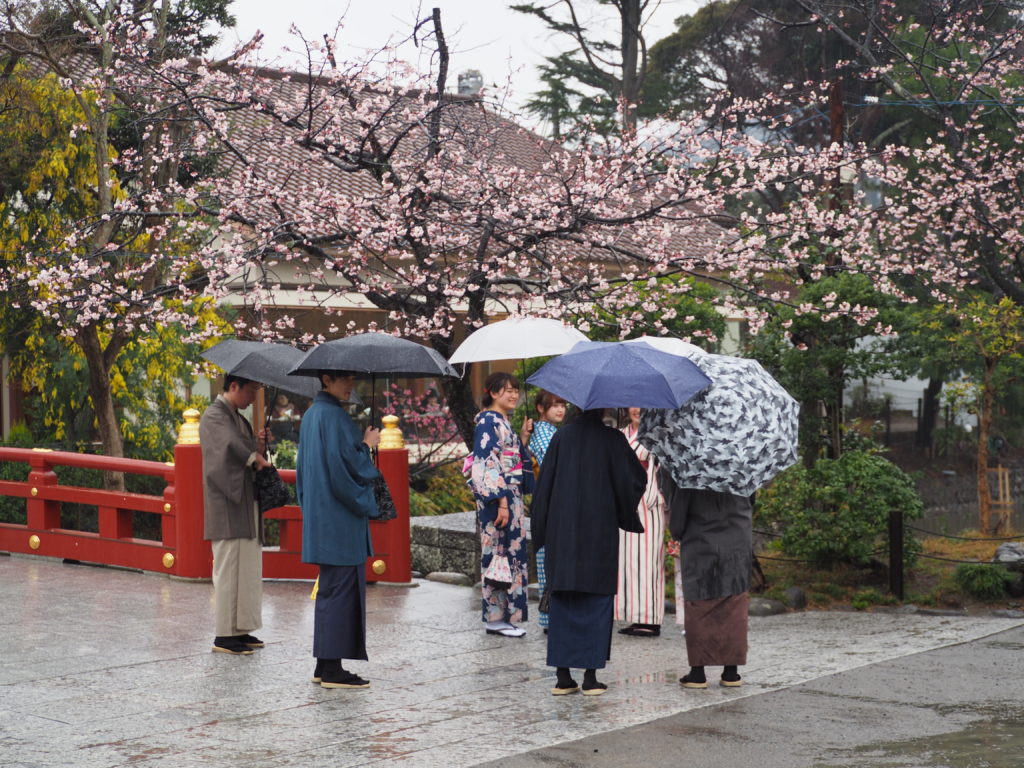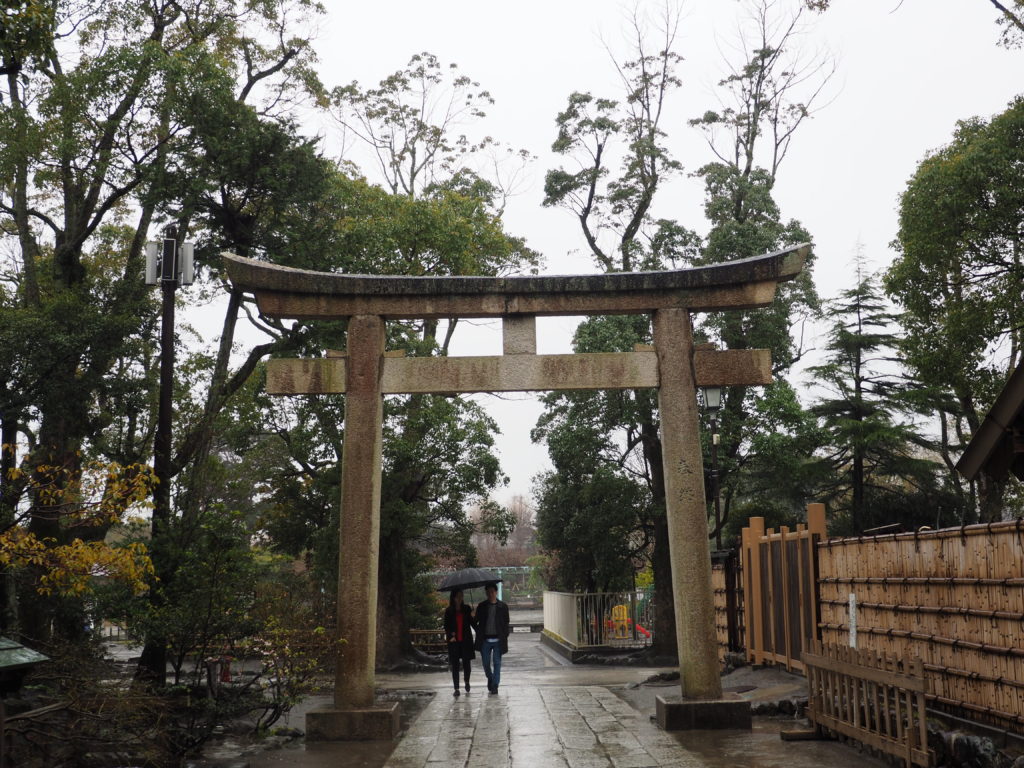Minamoto no Yorioshi (988-1075) established a small shrine for the Hachiman kami = Shinto God of war and archery – god of warriors, on Zaimokuza beach in Kamakura in 1063. This was his way of thanking Hachiman for helping him to win the decisive battle of his campaign from 1051 until 1062 against an uprising in the North-East of Japan. He had prayed for victory at Iwashimizu Hachimangu Shrine in Kyoto before sending his troops into the battle and received divine arrows from the shrine. He dedicated the divine arrows to the kami when the above mentioned original small shrine in Kamakura was built, which is now called Yuiwakamiya – Moto Hachiman Shrine. It is not on a beach any more, as the city mushroomed around it and the sea retreated.
Replicas were made of these arrows in 11th and 12th centuries and nowadays thirty of them are exhibited in the Shrine Museum in Hongú – Main Shrine area of Tsurugaoka Hachimangu. Unfortunately, photography is not allowed there. They are black lacquered, among them “kaburaya” – whistling arrows and “togariya” – sharp pointed arrows. They are highly decorative. During New Year celebrations “Hamaya” – an arrow to ward off evil, is an important amulet. Hachiman kami became the guardian kami of the Minamoto clan – this was publicly announced by samurai Minamoto no Yorinobu (968-1048). His eldest son was Minatomo no Yorioshi, whose eldest son was Minatomo no Yoshiiye (1039-1106) – Minamoto no Yoritomo´s ancestors. All of them were samurai warlords as they belonged to one of two military families in Japan in those times. No wonder then that they were all devoted to Hachiman and made him the tutelary deity of their family. Hachiman became worshipped to such extent that this god became the Mars of Japan.
Minamoto no Yoritomo (1147-1199) – the first Shogun of Kamakura shogunate, moved the shrine to the present site on a hill in 1180. Kamakura became the capital of Japan, Hachimangu temple was in the centre of the city and played an important role as a religious authority as many majestic rituals were held here by the shogunate. It also served as the political centre of the shogunate. Because it was dedicated to the god of war, it was visited by the samurai before their departure to the front lines to pray for victory. Many other shrines were added on the temple grounds and they also had to be rebuilt as time went by. It was designated as a nationally important cultural property in 1996.
There are about 80,000 Shinto shrines in Japan – and appr. 20,000 of them are dedicated to Hachiman kami. In as many as 40,000 shinto holy places Hachiman is enshrined. This kami also has a Buddhist title “Hachiman Dai Bosatsu”. Interestingly, when Buddhism arrived in Japan in the 6th century, Buddha was recognized as kami from across the seas. From the 7th century temples and shrines were built enshrining both Japanese Shinto kami and Buddhist deities.
Hachiman kami had appeared in Kyushu in the middle of the 6th century and was revered by the local clan as their tutelary kami. It started to be worshipped by the Yamato Imperial Court, too. The first Hachiman shrine, Usa Jingú or Usa Hachimangú, was founded probably in 725 and is mentioned for the first time in 737 in Usa, Oita Prefecture in Kyushu. It is the most prestigious Hachiman shrine.
Hongu – Main shrine – of Tsurugaoka Hachimangu shrine in Kamakura is situated on a prominent place on a hill. The present building was built by Tokugawa Ienari, the 11th Tokugawa shogun in 1828. It is a typical example of Edo shrine architecture. In the Edo period, ordinary people also started to worship at Tsurugaoka Hachimangu and this continues until today. It is the biggest shrine in Kamakura. This shrine is one of the most popular shrines in Japan with more than 18 million visitors a year. This is definitely one of historic sites that represents Kamakura and it ranks among the most famous Hachiman shrines.
